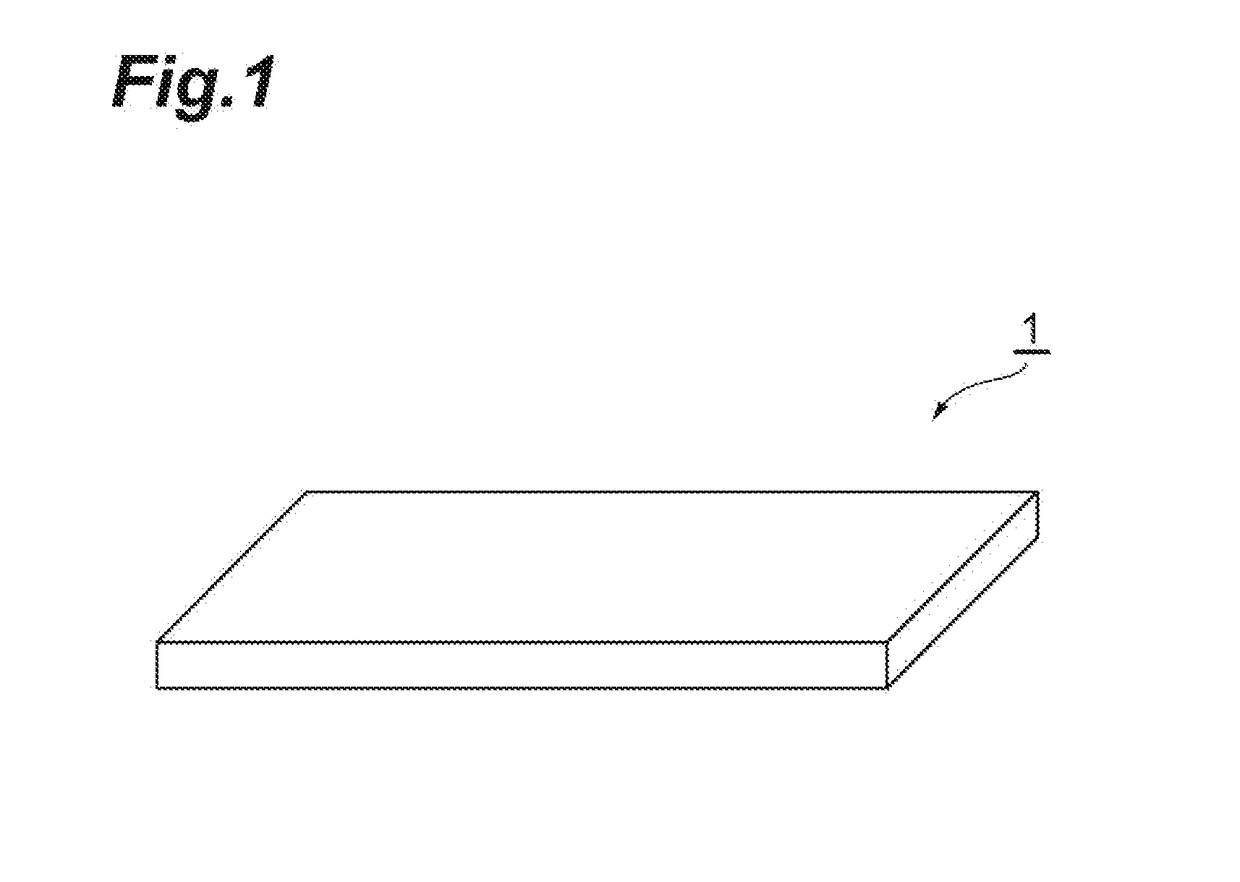Curable resin composition, composition for molding, resin molded article, and method for producing resin molded article
a technology of curable resin and composition, which is applied in the field of curable resin composition, composition for molding, resin molded article, and method for producing resin molded article, can solve the problems of easy cracking, easy cracking of molded article, and hardness of shape memory resin at low temperature, and achieve excellent shape restorability, high strength, and high elongation at break
- Summary
- Abstract
- Description
- Claims
- Application Information
AI Technical Summary
Benefits of technology
Problems solved by technology
Method used
Image
Examples
synthesis example 1
1,2-bis(2-acryloyloxyethylcarbamoyloxy)cyclohexane (BACH)
[0141]Trans-1,2-cyclohexanediol (2.32 g, 20.0 mmol) was introduced into a 100-mL double-necked pear-shaped flask, and the interior of the flask was purged with nitrogen. Dichloromethane (40 mL) and dibutyltin dilaurate (11.8 μL, 0.10 mol %: 0.020 mmol) were introduced into the flask. To the reaction liquid in the flask, a dichloromethane (4 mL) solution of 2-acryloyloxyethyl isocyanate (5.93 g, 42.0 mmol) was added dropwise from a dropping funnel, and the reaction liquid was stirred for 24 hours at 30° C. to cause a reaction to proceed. After completion of the reaction, diethyl ether was added to the reaction liquid, and the mixture was washed with saturated brine. The organic layer was dried over anhydrous magnesium sulfate, and then the solvent was distilled off under reduced pressure. A solution containing the intended product was isolated from the residue by silica gel chromatography (developing solvent: chloroform), and t...
synthesis example 2
G Oligomer 1
[0142]A polyethylene glycol (PEG1500, 750 mg, 0.500 mmol, number average molecular weight 1,500) and a polypropylene glycol (PPG4000, 2,000 mg, 0.500 mmol, number average molecular weight 4,000) were added to a 20-mL pear-shaped flask, and then the interior of the flask was purged with nitrogen. The content was melted at 115° C. 4,4′-Dicyclohexylmethane diisocyanate (262 mg, 1.00 mmol) was added to the molten liquid, and the molten liquid was stirred for 24 hours at 115° C. in a nitrogen atmosphere. Thus, PEG-PPG Oligomer 1 (second polymer containing polyoxyethylene chains and polyoxypropylene chains) was obtained.
[0143]The weight average molecular weight (Mw) of resulting Oligomer 1 was 9,300, and the weight average molecular weight / number average molecular weight (Mw / Mn) of Oligomer 1 was 1.65.
synthesis example 3
G Oligomer 2
[0144]A polyethylene glycol (PEG1500, 750 mg, 0.500 mmol, number average molecular weight 1,500) and a polypropylene glycol (PPG4000, 2,000 mg, 0.500 mmol, number average molecular weight 4,000) were added to a 20-mL pear-shaped flask, and then the interior of the flask was purged with nitrogen. The content was melted at 115° C. 4,4′-Dicyclohexylmethane diisocyanate (262 mg, 1.00 mmol) and dibutyltin laurate (11.8 μL, 0.10 mol %: 0.020 mmol) were added to the molten liquid, and the molten liquid was stirred for 24 hours at 115° C. in a nitrogen atmosphere. Thus, PEG-PPG Oligomer 2 (second polymer having polyoxyethylene chains and polyoxypropylene chains) was obtained.
[0145]The weight average molecular weight (Mw) of resulting Oligomer 2 was 50,000, and the weight average molecular weight / number average molecular weight (Mw / Mn) of Oligomer 2 was 1.95.
2. Measurement of Molecular Weight
[0146]A GPC chromatograph of an oligomer was obtained by using DMF (N,N-dimethylformamide...
PUM
| Property | Measurement | Unit |
|---|---|---|
| storage modulus | aaaaa | aaaaa |
| mass | aaaaa | aaaaa |
| shape memory properties | aaaaa | aaaaa |
Abstract
Description
Claims
Application Information
 Login to View More
Login to View More - R&D
- Intellectual Property
- Life Sciences
- Materials
- Tech Scout
- Unparalleled Data Quality
- Higher Quality Content
- 60% Fewer Hallucinations
Browse by: Latest US Patents, China's latest patents, Technical Efficacy Thesaurus, Application Domain, Technology Topic, Popular Technical Reports.
© 2025 PatSnap. All rights reserved.Legal|Privacy policy|Modern Slavery Act Transparency Statement|Sitemap|About US| Contact US: help@patsnap.com



